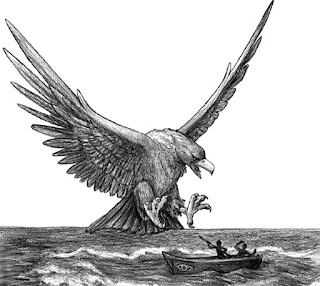Legendary monsters terrified Europe during the Middle Ages
During the medieval period, many regions of the European continent lived in a state of fear because of ancient legends about mythical creatures attacking humans.
In conjunction with the disappearance of some people and the sinking of one of the boats, the area witnessed a state of hysteria, and the residents did not hesitate to blame the mythical monsters for these evils that were afflicting them.
While explorers and merchants played an important role in transferring such myths from one region to another, based on the strange stories they were talking about after returning from their travels.
In the following, we review a number of the most important monsters that terrified the inhabitants of the European continent during the medieval period:
manicure:
The mythical manticore monster is classified as one of the most dangerous beasts that has long terrified travelers and residents of remote villages.
This monster was mentioned by the Greek physician and historian Ktesias, who was present for a period of time in Persia and India.
The legendary manticore
During his stay at the court of the Persian King Artaxerxes II, Ctesias described this legendary monster of Persian origin as a bloodthirsty.
He emphasized that his shape was terrifying, as the manticore had the body of a lion, the head of a human, and he had 3 rows of teeth, while his mouth extended from one ear to another.
This mythical beast had a tail similar to that of a scorpion, at the end of which there are a huge number of poisonous thorns that the manticore uses to finish off its human prey before swallowing it completely.
• Kraken:
During the Middle Ages, sailors lived in a state of fear when sailing in deep waters, and the reason for this was due to the legends that spoke of giant sea creatures feeding on human flesh.
The sea monster, the kraken, which has recorded an important presence in Norwegian folklore, is the most prominent sea monster that has terrified the sailors.
The legendary kraken
The legendary kraken finds its origins in the norwegian hafgufa, a giant fish that depends on human lethality.
The Kraken was a giant octopus that frightened Norway and Greenland by attacking all ships sailing there, sinking ships and their crews to the bottom.
• The Griffin
It is considered one of the most important mythical beasts in Europe, and many dynasties and cities have used it as a symbol until now to classify the Griffin as the most prominent and influential mythical being on the continent.
The Griffin possessed the body of a lion, and the head and wings of a scorpion, and the latter deliberately attacked his victims and flew them high before throwing them to the ground.
And the European merchants returning from Central Asia talked a lot about this strange beast. In addition, the English writer and traveler John Mandeville gave an accurate description of this mythical creature.
The griffin
According to a number of contemporary researchers, the appearance of the griffin during the Middle Ages came after traders found, during their return to Europe, the fossil of one of the giant dinosaurs, in order to invent stories about this mythical creature.• Rook:
This giant mythical bird recorded its movement towards Europe thanks to the movement of trade, where this creature knew its first appearance among the Arabs through the stories of the Thousand and One Nights, especially within the story of Sinbad.
The Italian traveler of Italian origin, Marco Polo, talked a lot about this mythical beast, and emphasized its huge size, and its ability to catch huge animals such as elephants and fly them for long distances before starting to eat them.
Legendary Rook
Some researchers in the contemporary period tend to link the mythical rook and the elephant bird, which is estimated to be about 4 meters long, and the latter's presence on the island of Madagascar before it became completely extinct in the seventeenth century.
• Monsters of Belmis:
During their travels towards both Asia and Africa, the Europeans did not hesitate to tell terrifying stories about savage peoples, perhaps the most prominent of them are the so-called mythical beasts of Balmis, who were men with thick hair but without heads, and their eyes and mouths were at the level of their chests.
The first description of this people came during the fifth century BC, where the Greek historian Herodotus transmitted a description of a people without heads and eyes at the level of the chest in North Africa, before the Roman historian Pliny the Elder addressed it during the first century AD.
The legendary Blemies beast
This mythical being was taken as an inspiration for many artistic and cultural works during the following centuries.
https://www.masa-pro.com/2022/08/legendary-monsters..html?fbclid=IwAR1_mfsXNkFuJI5y3fZiHwOldzwjWDaraLv9Pz-ImCyAikBuQ6TkUVrqsas






